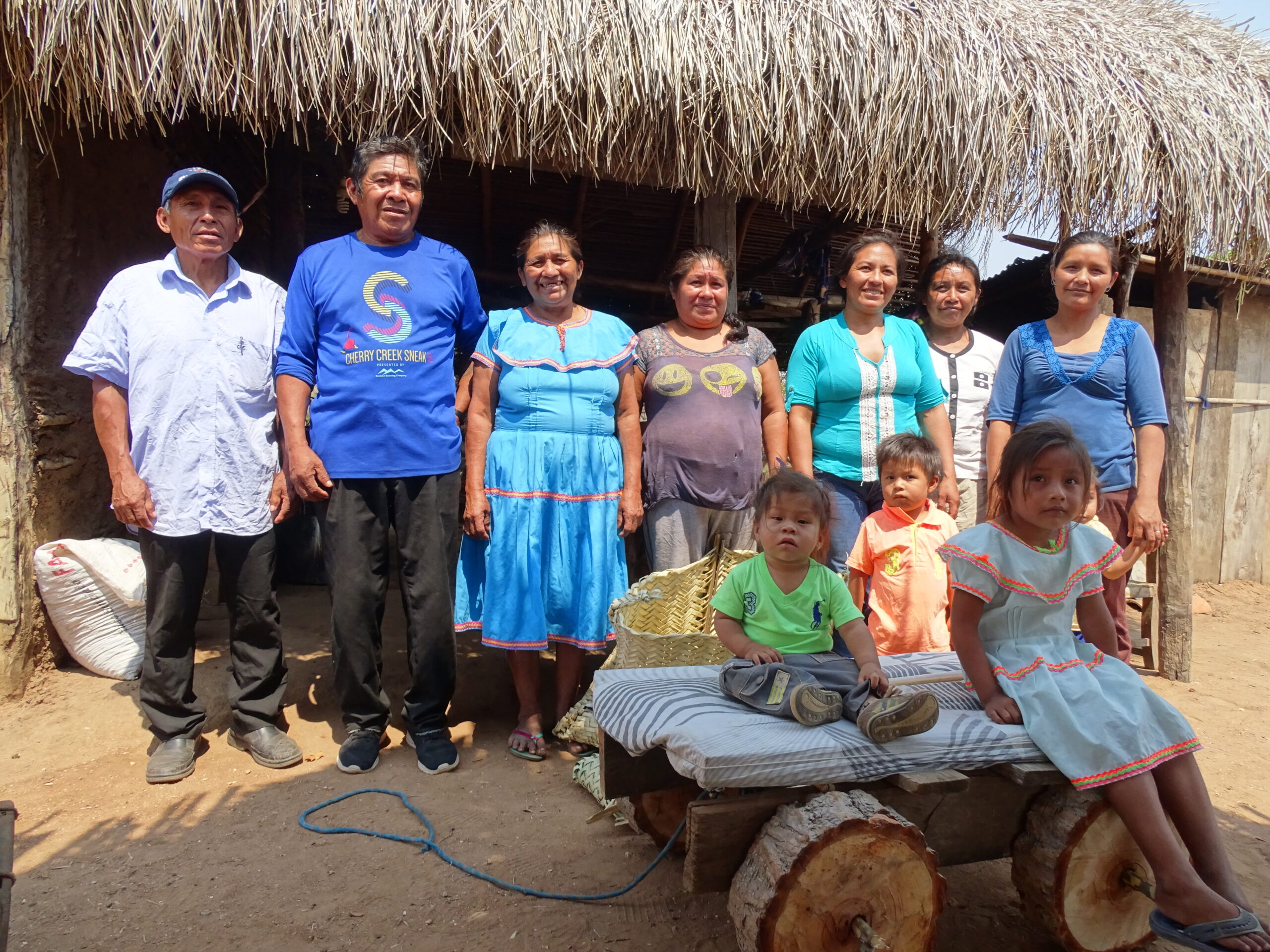After enduring the negative impacts of tungsten mining, the community of El Puquio declared a halt to mining and turned to sustainable alternatives such as organic farming, beekeeping, and forest management. However, water scarcity, climate change, and limited market access are currently hindering their progress. The community now finds itself at a crossroads between the need to generate income, the possibility of returning to mining, and the protection of their territory.
In the Bolivian Chiquitanía, the community of El Puquio Cristo Rey has had a negative experience with tungsten mining. For over a decade, they have suffered the consequences of extracting this mineral, which is in high demand globally due to its extreme hardness. The indigenous territory of Lomerío is located 380 kilometers northwest of Santa Cruz de la Sierra and is home to 506 inhabitants.
The Monkoxi nation is one of the 34 indigenous peoples of Bolivia’s Lowlands residing in the Original Community Land (TCO) of Lomerío within the region known as Chiquitanía. In this indigenous territory, which houses 506 residents, lies El Puquio Cristo Rey, a community that has faced challenges with tungsten mining. Due to its hardness, this mineral is highly sought after by the global arms industry, mining, oil, and aerospace sectors.
The extraction of tungsten violated the right to Free, Prior, and Informed Consent (FPIC). Lack of awareness of this right led communities to work for the Amasulla company, which brought about irreversible consequences such as a reduction in water flow in the creek, the loss of ancestral agricultural practices (as the youth were mostly employed in the mines), and the introduction of customs alien to their way of life (such as coca leaf chewing and early alcohol consumption).
Recognizing these damages, the territory’s authorities and community members chose to pursue alternative activities that would generate income without causing future environmental devastation. They implemented sustainable alternatives such as agroecological gardens, beekeeping, sustainable forest management, embroidery, and the revival of ancestral farming practices.
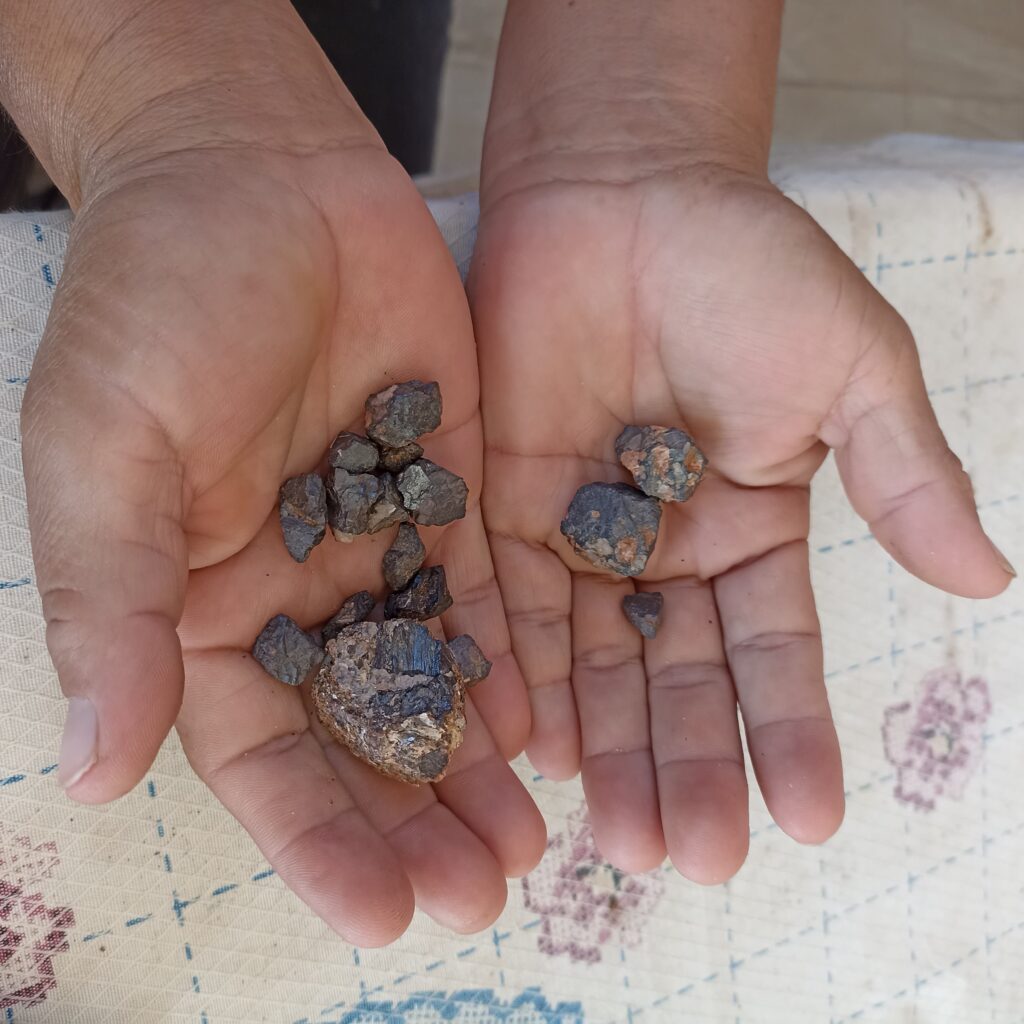
Tungsten in Bolivia
The report The Cracks in Tungsten in Bolivia (2017) explains that the country has an estimated reserve of 53,000 metric tons of the mineral, representing 2% of global reserves and about 3% of China’s reserves (considered the world’s leading producer). The study by the Center for Documentation and Information Bolivia (CEDIB) adds that the country has more than 200 individual deposits and is one of the world’s top exporters, along with Russia, Canada, and Portugal.
Isabel Parapaino Supayabe, Gender Chief of the El Puquio community and head of the collection center during tungsten extraction, recalls that mining activity began manually in 2000, with those extracting the mineral having to walk three kilometers daily. At that time, a kilo of the mineral was worth 40 bolivianos due to demand, and the price per kilo eventually peaked at 120 bolivianos. As time went on, the extraction process became increasingly difficult.
Parapaino also recalls that, as a result of the mining activity, a creek dried up. “During the dry season we would bring our urupeces (sieves). As the earth shifted, the soil would wash away, leaving only the mineral. In the rainy season, we had to bag the mineral, take it to the creek, and wash it in a pan (or bathtub). That way, just with water, we would separate the tungsten from the soil or rock. Now, the creek is dry; there’s no more water.”
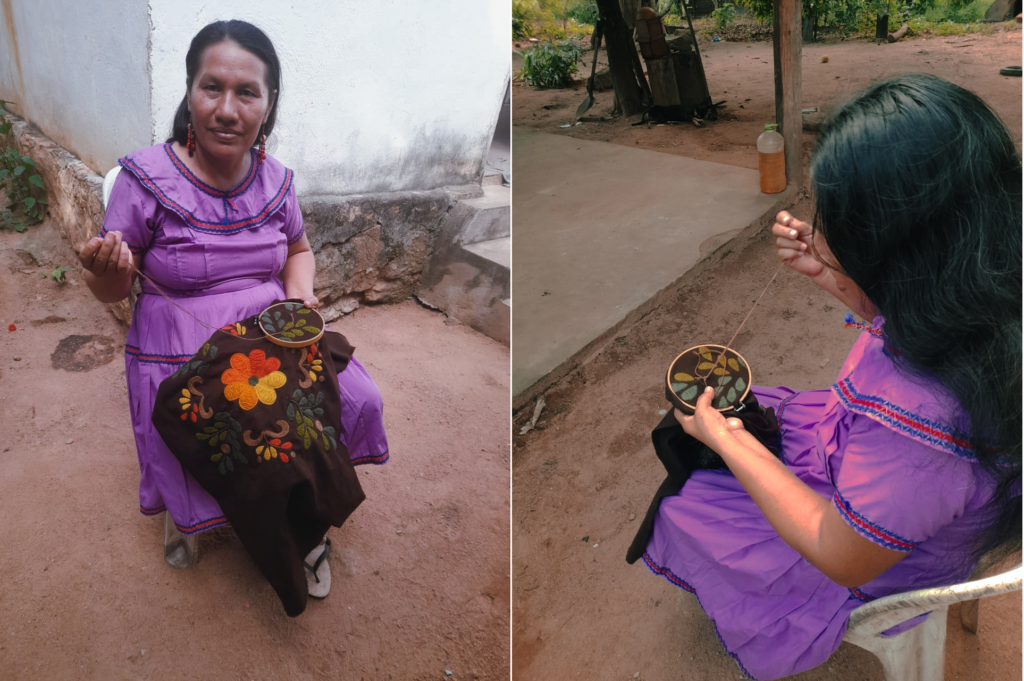
Work in the pits
After attracting the attention of several mining companies, the Bolivian company Amasulla reached an agreement with the local community to collaborate on tungsten extraction. The company offered to improve working conditions, including safety measures and providing proper tools. They also introduced the use of dynamite to fracture the rocks, which allowed for increased extraction. However, this brought new challenges due to the higher levels of danger, which required more training and expertise. “Mining brought new customs that went against the community’s traditions, such as coca leaves, cigarettes, and alcohol consumption, especially among the youth,” says Parapaino.
The community organized itself into six mixed groups of men and women, each consisting of 15 people to work in the pits. The younger men took on the heavier and more dangerous tasks, such as drilling and handling dynamite. The women and elderly stayed outside the pits, forming a chain to clear the bottom, remove rocks in buckets, and prepare the ground for the next stage of work.
Once the material had been extracted from the pits, the groups would gather at a house to clean the tungsten, separating it from the rocks, washing it, and drying it. The profits were shared equally among the group members. The workdays were long, often lasting an entire day and night, with workers returning home after three days of labor. Mothers had to leave their young children in the care of their older siblings. After the company left, some continued mining tungsten individually, venturing into pits as deep as 50 meters, despite the risk of their collapse.
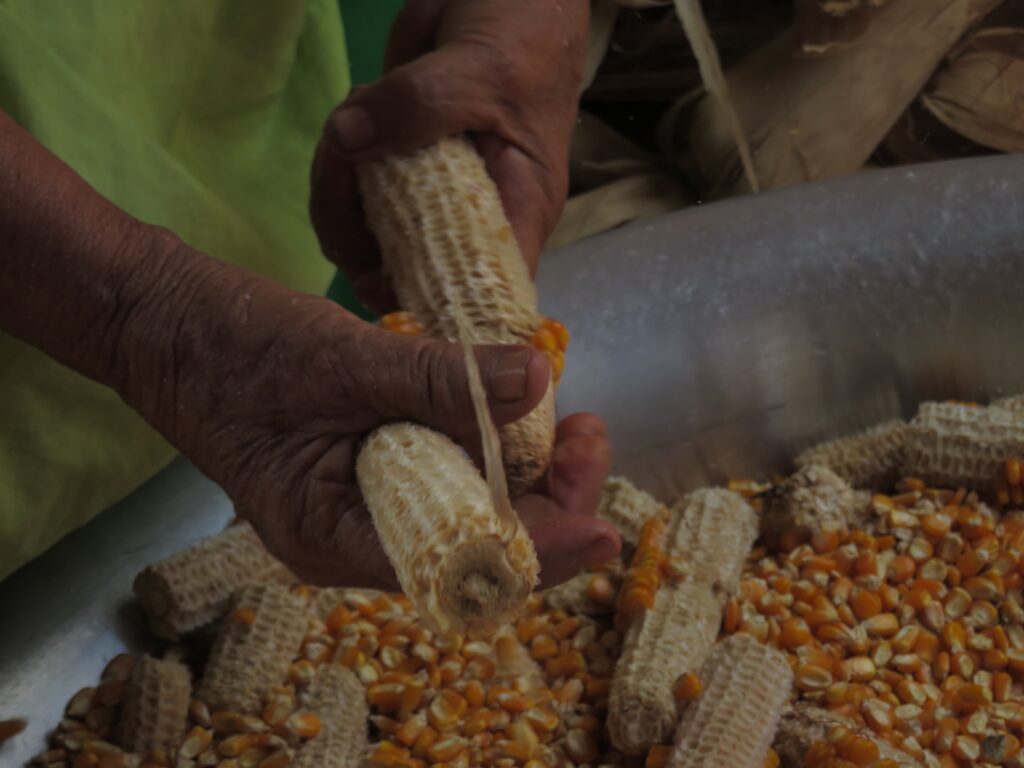
The right to consultation and the mining pause
Among the collective rights recognized by the new Political Constitution of the Plurinational State, approved in 2009, Free, Prior, and Informed Consultation (FPIC) is highlighted, as it guarantees that Indigenous peoples can determine the development priorities of their territories. However, the Concluding Observations of the Committee on the Elimination of Racial Discrimination warned: “The current legal framework on prior consultation is sectoral, fragmented, and does not meet international and regional standards for the right to Free, Prior, and Informed Consultation and Consent”.
In this context, Anacleto Peña Supayabe, General Chief of the Indigenous Central of Original Communities of Lomerío (CICOL), explains that the FPIC environmental report is neither developed in collaboration with community members nor does it respect their culture and traditions. This violates their rights as Indigenous peoples, and the document becomes merely a formality to initiate exploitation in their territories. From Peña’s perspective, the Bolivian state does not adequately monitor mineral or hydrocarbon extraction activities.
In its observations, the Committee on the Elimination of Racial Discrimination recommends that the Bolivian state adopt the necessary administrative measures to ensure that prior consultations are conducted ‘systematically and transparently’ to secure Free, Prior, and Informed Consent before decisions are made that may affect Indigenous communities. The United Nations body emphasizes that consultations should occur before any exploration activities are initiated or licenses are granted for infrastructure, mining, gas, or oil projects.
In response to these recommendations, Anacleto Peña Supayabe stated “There should be no contamination of the territories either during or after mining activities. However, the companies and cooperatives that come to our lands pressure and threaten the authorities and community members with bringing in the police. This violates the right to free consent.” Following the decision of the Grand Assembly, in 2018, the Indigenous Central of Original Communities of Lomerío declared a mining pause to prohibit the entry of companies and individuals seeking to exploit the mineral again.
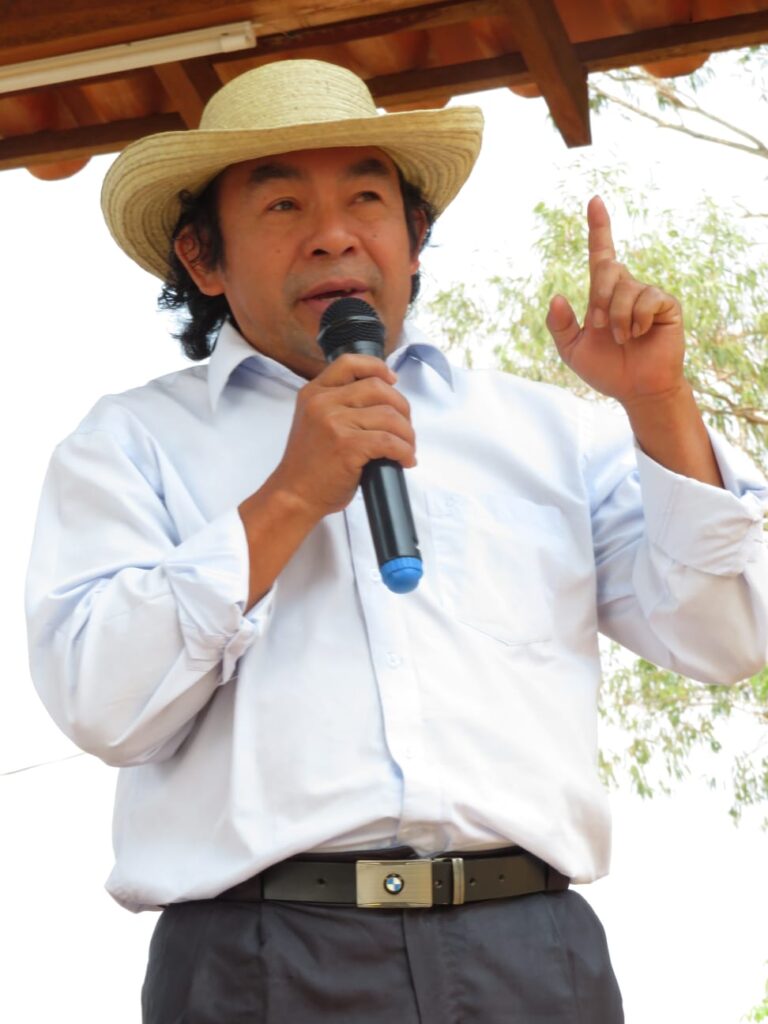
Sustainable alternatives to replace mining
Following the environmental damage caused by tungsten mining and the subsequent mining pause, the communities in the Lomerío territory decided to implement a series of socio-productive and community projects: agroecological gardens, beekeeping, sustainable forest management, and the promotion of Monkoxi crafts. The goal is to generate resources in harmony with nature.
Firstly, agroecological gardens were established in schools and family homes to ensure food security, producing healthy, pesticide-free food that does not pose a risk to health. This initiative has shown promising results. It is environmentally friendly, benefits public health, and engages the entire community. However, the downside is that the soil may not be suitable for growing vegetables, limiting its commercial potential and confining it to family consumption only.
Secondly, the Lomerío Honey Producers Association (APMIL) was established to provide technical support for sustainable practices and to revive the ancestral knowledge of honey producers. The art of harvesting honey is a lengthy process that involves maintaining, cleaning, and feeding the bees, as well as a range of specific tasks during the flowering season from August to November. The group comprises 17 female meliponiculturists working with native bee species Suro (Scaptotrigona spp) and Señorita (Tetragonisca angustula), and five male beekeepers working with the Apis species (Apis mellifera) from Cuba.
Thirdly, the residents have deepened their sustainable forest management plans as a tool for long-term wood management and utilization. Although these management plans began in 1984, they are now viewed as an alternative to generate economic resources and improve family incomes. “Forest management involves preparing everything in an orderly manner: counting the trees, cutting them, measuring them, calculating their volume in cubic meters, and selling them. Management plans cover areas of 200 hectares or more, and the trees must have a minimum diameter of 40 centimeters,” explained Peña.
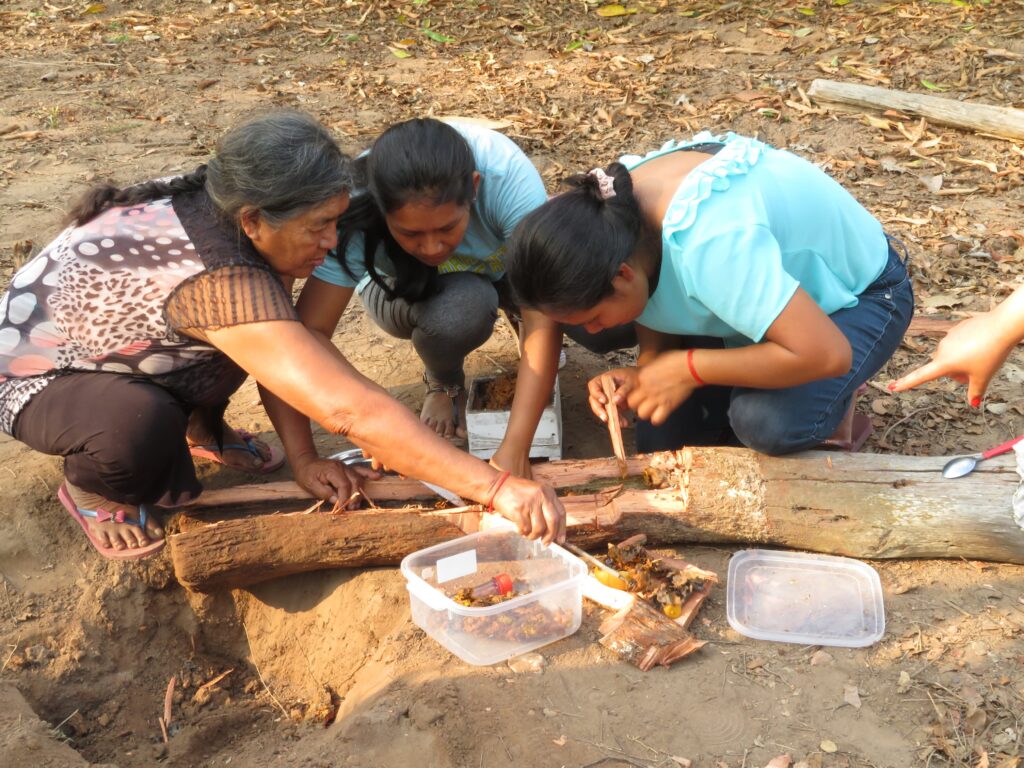
Between embroidery and community work
Maria Chore, General Chief of the Organization of Monkox Indigenous Women (OMIML), explains that the embroidery and weaving work of the El Puquio Cristo Rey community began in 1985 with two women, Julia Chuve and Catalina Peña. Initially, they received support from the Center for Research, Craft Design, and Cooperative Cooperation (CIDAC) and initially only wove chipas and quiboros. Today, 12 communities with a total of 130 female artisans are affiliated wtih the initiative.
Since 1992, other communities in Lomerío have joined the CIDAC and Artecampo initiative, which has provided training in embroidery and sewing. At first, a chipa cost 15 bolivianos and a quiboro 5 bolivianos, but now prices vary for different designs, ranging from 50 to 120 bolivianos. These fair prices contribute to the economic income of the women and their families. One strategy to attract more projects involved obtaining legal status for the Association of Weavers and Embroiderers of Lomerío (Asartebol) to form partnerships with other institutions.
At the same time, the ancestral practice of chaco cultivation has been revived in the Lomerío territory. In Monkox culture, chaqueo is a family activity that involves clearing a space suitable for planting. After clearing, the leaves and branches are left to dry naturally before conducting controlled burns. Finally, the land is prepared for planting maize, yuca, plantains, or rice. Similarly, the practice of minga (collective work) has been strengthened, which involves the entire community coming together to assist a family in need.
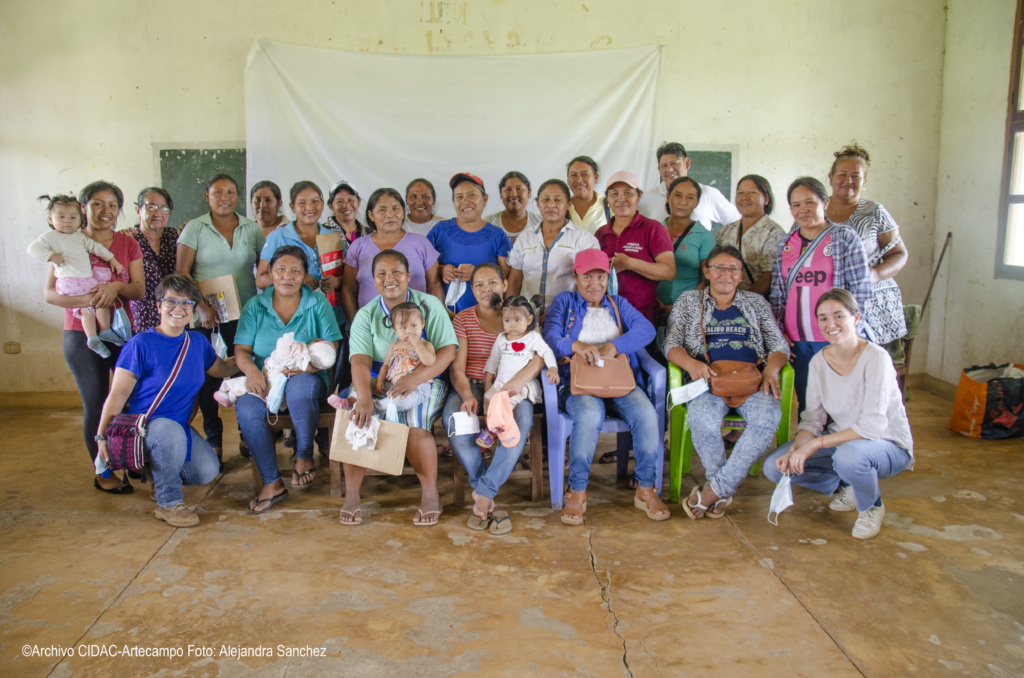
Climate change and the crossroads of Lomerío
The experience of the Puquio Cristo Rey community highlights how mining exploitation can impact the natural environment of Indigenous peoples. Tungsten mining in Lomerío serves as a further example of why it is crucial for communities to have a voice and be involved in decisions regarding the use of their lands and resources. In this context, pursuing sustainable development alternatives is vital for ensuring a prosperous future for Indigenous peoples and the planet.
the situation has deteriorated in recent years as Lomerío has faced climate-related-changes, including rising temperatures, reduced rainfall, and fires at the end of the dry season. These changes have affected agriculture, beekeeping, and access to water for human consumption. Climate change impacts economic alternatives and places the community at a crossroads, where finding ways to generate income to meet basic needs becomes imperative.
In this uncertain context where climate change threatens food sovereignty and drought damages maize and yuca crops, some community members are considering tungsten mining as a potential solution. The situation in Puquio Cristo Rey is complex because the community understands that the return of mining operations would impact their land and rights. The decision is difficult and must be made with care: Lomerío has already suffered from the effects of mineral extraction on its territory.
This research was conducted as part of the ‘Competitive Fund for Investigative Journalism on the Bolivian Amazon and Climate Justice,’ organized by IPDRS, with support from OXFAM and ASDI.

Eliana Peña Choré is a Monkoxi journalist with certification in journalism from the Indigenous and Environmental Journalism Program (IWGIA/UPSA/ORE) and host of the radio program Voces Indígenas Urbanas.

Mary Luz Guzman Ruiz is a Guaraní journalist with certification in journalism from the Indigenous and Environmental Journalism Program (IWGIA/UPSA/ORE).
